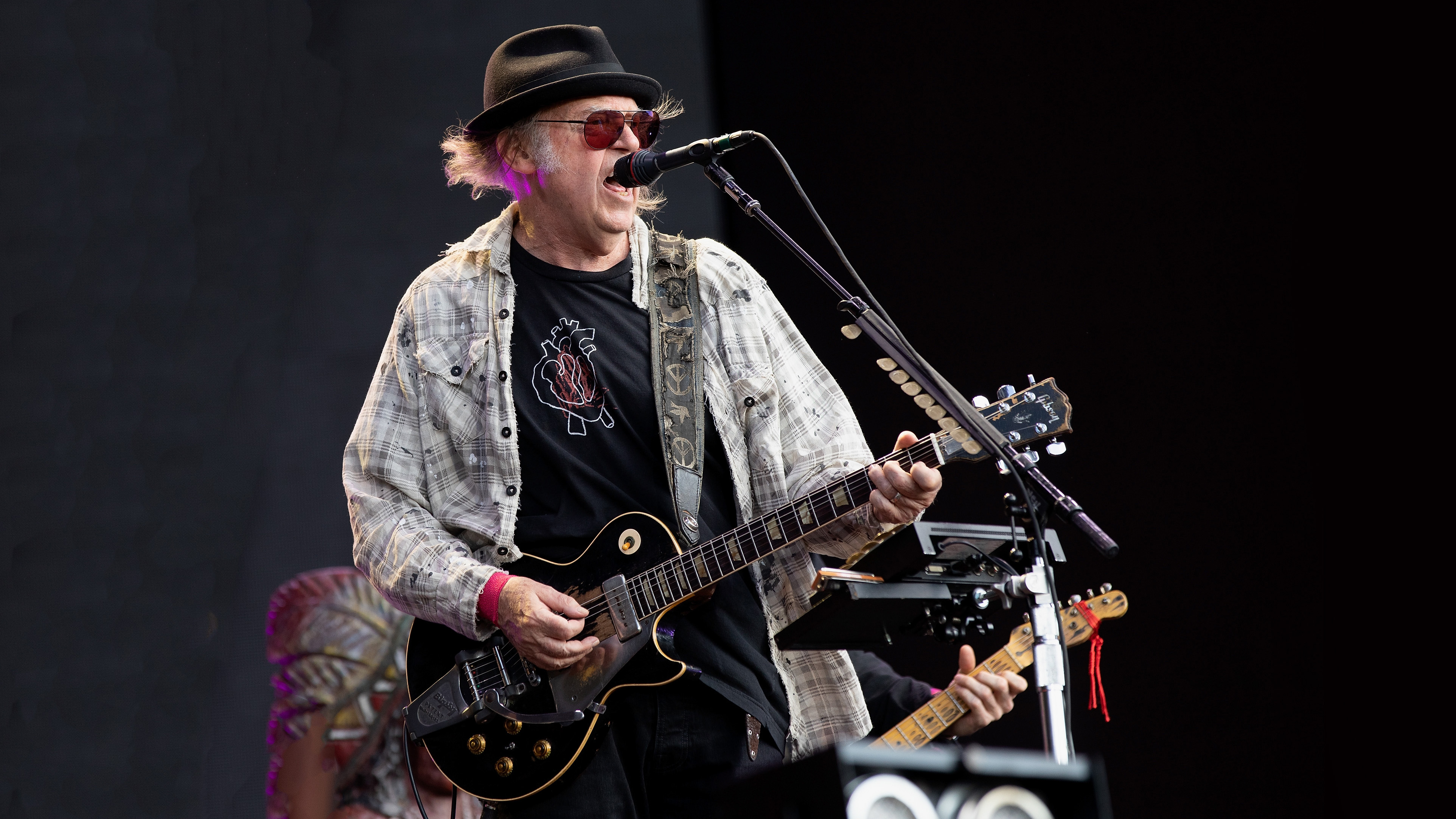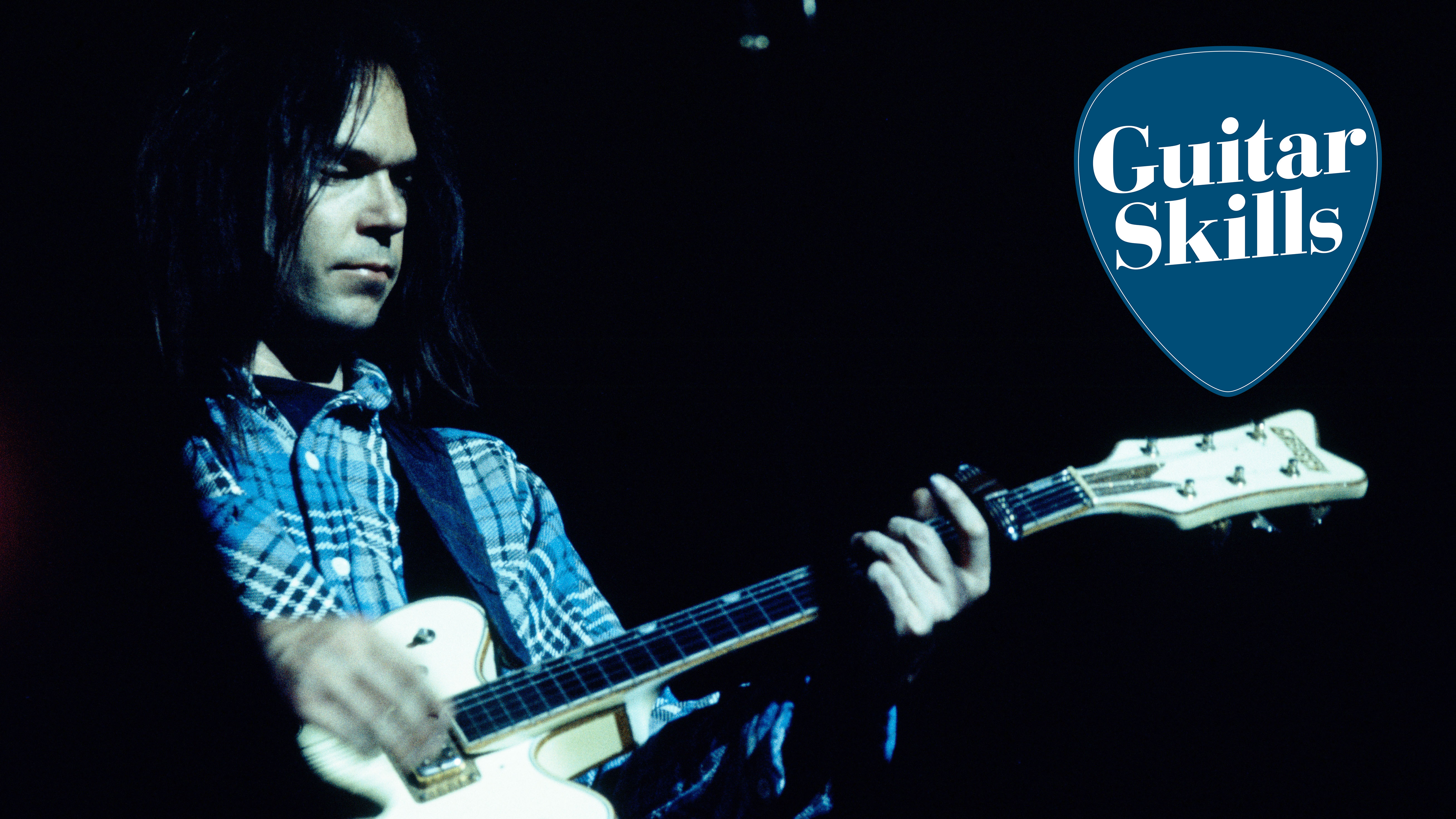5 songs guitarists need to hear by… Neil Young
Neil Young is a guitarist that still divides opinion, but in a career that now exceeds 50 years and is still making headlines, he has always followed his own path and left a trail of guitar classics in his wake

Having travelled down to LA from his native Winnipeg in Canada, Neil Young hooked up with fellow guitarist Stephen Stills to form Buffalo Springfield in 1966. Over the next two years the band would practically invent folk-rock, and from that moment onwards Young has forged his way through both genres, influencing generations of guitarists along the way.
From the delicate beauty of his acoustic playing on the likes of 1972’s Harvest, to the crushing, ahead-of-its-time grunge of the second side of 1979’s Rust Never Sleeps, through 1980s experimentalism, a 1995 collaboration with Pearl Jam and on to the present day, Young’s career has been varied to the point of almost being impossible to follow in its entirety. But along the way he has dropped some of the most iconic songs and guitar workouts the rock genre has ever known.
Famously loose (critics say sloppy) in his playing, what Young does is in many senses not complicated. His skill as a musician is in imbuing what he plays with a feel and a passion that few can replicate. “He can make one note sound more soulful than some metal guy make 25 notes played in the same space,” said indie-rock stalwart Juliana Hatfield in a recent interview, and that ability is what sets Young apart. Here, then, are just five songs you need to check out…
1. The Needle And The Damage Done – Harvest, 1972
Young has switched effortlessly between electric and acoustic playing throughout his career, employing his folk and ‘proto-grunge’ sides to equal effect. On Harvest, his electric playing shines on Heart Of Gold, but the focus really falls on his acoustic work with both Old Man and The Needle And The Damage Done.
We’ve given the latter the nod in a tight-run contest due to the beauty and simplicity of Young’s playing; those who knock him as a guitarist need to listen to how much he can do with so little. The descending chord progression, and use of sus4 chords to delay the resolution, supports a lyric and vocal performance that drips with feeling, Young having watched Crazy Horse guitarist and collaborator Danny Whitten become addicted to heroin, an addiction that would take his life in the same year as Harvest was released.
For an artist renowned for extended guitar workouts, Young allows The Needle And The Damage done to travel from start to conclusion in just two minutes, deciding against re-recording the song for the album and instead including a live performance from UCLA’s Royce Hall a year earlier.
2. Act Of Love – Mirrorball, 1995
Having been inducted into the Rock N Roll Hall of Fame by Eddie Vedder in 1995, and then playing a pro-choice gig with Pearl Jam shortly afterwards, ‘Uncle’ Neil hooked up with his nephews for four days in January and February at Seattle’s Bad Animals Studios with the idea of collaborating on an album.
Get the MusicRadar Newsletter
Want all the hottest music and gear news, reviews, deals, features and more, direct to your inbox? Sign up here.
All bar two of the songs were written during that four-day period, with the pro-choice riff-fest that is Act Of Love being one of them. It’s a typically simple Young composition, based around four chords in E major, but it brings the best out of Young, and Pearl Jam’s Mike McCready and Stone Gossard, with all three guitarists playing with freedom and expression.
That sense of joy at being in the studio together continues throughout an often-overlooked but truly excellent addition to the Neil Young canon. I’m The Ocean follows Act Of Love and could just as easily have taken this slot, while the three-track run of Peace And Love, Throw Your Hatred Down and Scenery captures the essence and musicality of both Young and his protégées.
3. Hey Hey My My (Into The Black) – Rust Never Sleeps, 1979
If The Needle And The Damage Done is an example of Young’s guitar playing at its most succinct and simplistic, the Hey Hey My My (Into The Black) is Young at his heaviest, most ragged and most glorious. It’s another song that can be crushingly heavy live and its influence is all over the alternative rock bands of the early 1990s.
It follows the same chord structure as its companion piece, My My Hey Hey (Out Of The Blue), with that sparse acoustic version of the song opening side A of Rust Never Sleeps before Hey Hey My My closes out side B. In the key of E, with the guitar tuned to DGCFAD, this is Young at his most rocking and most alternative.
The song was inspired by Young’s work with the post-punk band Devo in the late 1970s, and it’s influence on the grunge is well documented. Nirvana’s Kurt Cobain even quoted Young’s lyric, ‘It’s better to burn out than fade away’ in his suicide note, with Young giving extra emphasis to the ‘Once you’re gone you can’t come back’ line in live performances ever since.
4. Cinnamon Girl – Everybody Knows This Is Nowhere, 1969
Perhaps one of Young’s most famous songs, gaining particular attention for its ‘one-note solo’ that placed him on a pedestal for many as an anti-guitar hero, proving that he could convey more feeling with a single repeated D note than many more conventional players could do with a full bag of tricks. Young himself has contended that: “people say it is a solo with only one note but, in my head, each one of those notes is different. The more you get into it, the more you can hear the differences.”
While that solo might be relatively easy to replicate, the rhythm chords are more complex and Young’s then new ‘Old Black’ 1953 Gibson Les Paul Goldtop was tuned down to double-drop D with both the high and low E strings tuned down to D (DADGBD).
Everybody Knows This Is Nowhere was Young’s first record with Crazy Horse, and the guitar as well as vocal interplay between Young and Danny Whitten took the music into a rather heavier and less overtly psychedelic direction than was typical for the time. As discussed elsewhere here, Young would become known as the ‘Godfather of Grunge’ in the early nineties, and that journey essentially started with Cinnamon Girl.
5. Cortez The Killer – Zuma, 1975

A signature Neil Young song, recorded with Crazy Horse, that doesn’t sound like it could have come from any other artist. This behemoth, once again down-tuned to double-drop-D (DADGBD) is built around just three chords (Em7, D and Am7sus4) but is so much more than the sum of its parts, littered as it is with Young’s trademark off-kilter soloing, droning melodies and plenty of Bigsby tremolo abuse.
On record it fades out at seven-and-a-half minutes, apparently because of a technical issue during recording that saw a final verse and more lost forever, but live it has been known to stretch out to a quarter-of-an-hour and take on significantly more weight and heft. Listen to the live version on 1991’s Weld to have your head completely pummelled.
The influence of this song down the years can be counted in the number of bands to have covered it, stretching from indie darlings Slint to metallers Prong via the Dave Matthews Band, Gov’t Mule and Built To Spill amongst others. The fact the song is so often covered by Dinosaur Jr, with J Mascis improvising endlessly, should tell you all you need to know about the power and beauty at the heart of this music.
Interview: Stephen Stills talks guitars, CSN, classic songs, Jimi Hendrix
“Every note counts and fits perfectly”: Kirk Hammett names his best Metallica solo – and no, it’s not One or Master Of Puppets
“I can write anything... Just tell me what you want. You want death metal in C? Okay, here it is. A little country and western? Reggae, blues, whatever”: Yngwie Malmsteen on classical epiphanies, modern art and why he embraces the cliff edge









